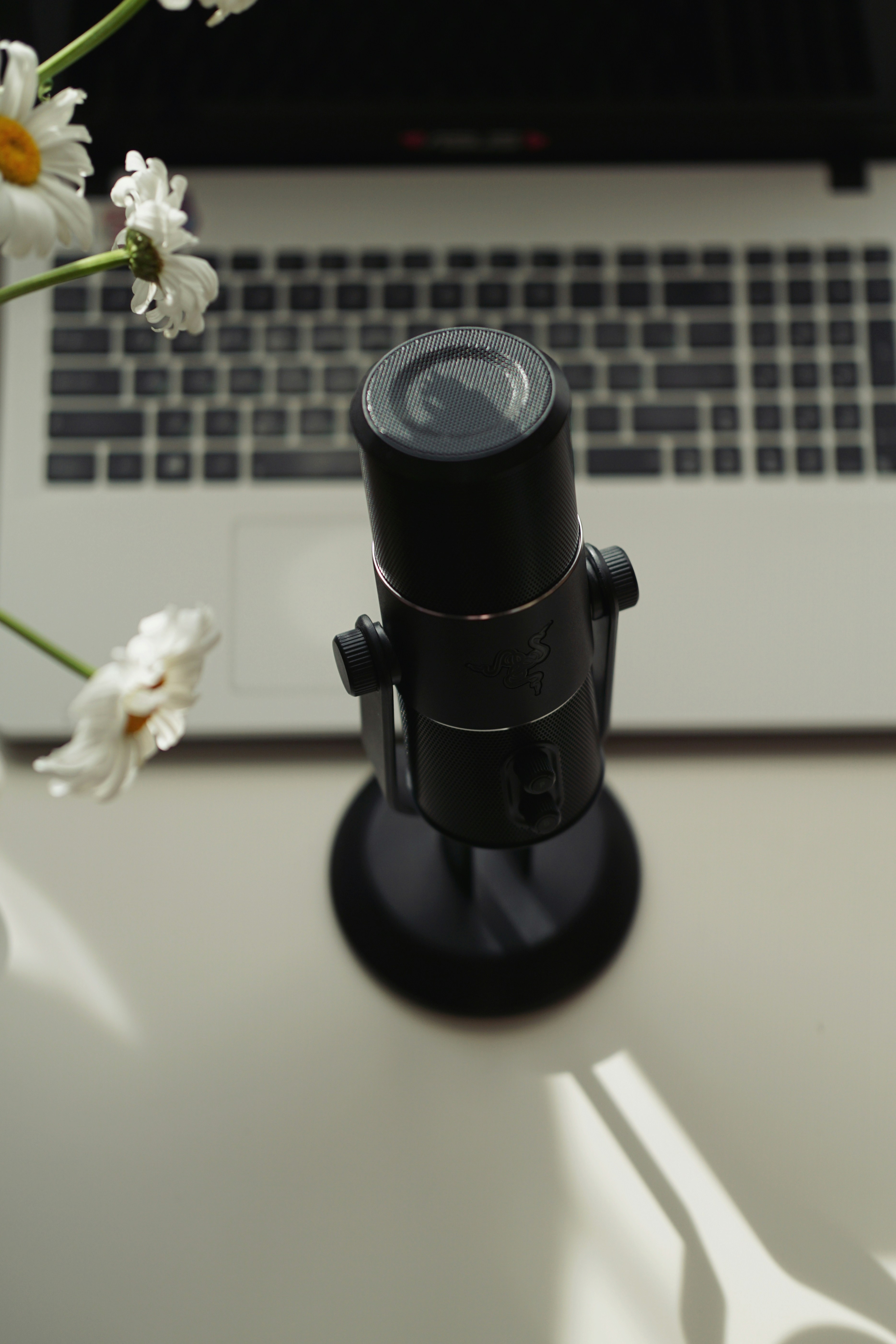If you have ever wondered if it is possible to start blogging for free, we have great news for you. In this article, we will show you how you can begin your own blog without spending a single penny. From choosing the right platform to creating engaging content, we will guide you through the entire process so that you can embark on your blogging journey with confidence. Whether you want to share your passion for cooking, personal experiences, or advice on a particular topic, this article is your ultimate resource for kickstarting your free blogging adventure. So, let’s dive in and discover the exciting world of blogging without breaking the bank!

Choose a Blogging Platform
When it comes to starting a blog, one of the first decisions you need to make is choosing the right blogging platform. There are plenty of options available, each with its own set of features and limitations. Before making a choice, it is important to research the available blogging platforms and consider your own goals and needs.
Research available blogging platforms
Take some time to research the various blogging platforms that are available. Some popular options include WordPress, Blogger, and Tumblr. Each platform has its own unique features and user interface, so it is important to familiarize yourself with them before making a decision.
Consider your goals and needs.
Think about what you hope to achieve with your blog and consider your specific needs. Are you looking for a simple platform for personal blogging, or do you have more professional aspirations? Consider factors such as ease of use, customization options, and the ability to monetize your blog.
Compare features and limitations.
Once you have a list of potential blogging platforms, compare their features and limitations. Look for features such as customizable themes, integration with social media, and the ability to add plugins or additional functionality. Consider any limitations that may affect your ability to achieve your blogging goals.
Select a suitable platform.
After thoroughly researching and comparing the available options, it’s time to select a suitable blogging platform. Choose one that aligns with your goals and needs and feels comfortable to use. Remember, you can always switch platforms in the future if your needs change.
Create an Account
Now that you have chosen a blogging platform, it’s time to create an account and get started. This step-by-step process will guide you through the account creation process.
Visit the chosen blogging platform’s website.
Start by visiting the website of the blogging platform you have chosen. Look for a prominent “Sign Up” or “Create Account” button on the homepage.
Once you have located the appropriate button, click on it to begin the registration process. This will usually take you to a new page where you will need to provide some basic information.
Follow the registration process.
The registration process may require you to provide information such as your name, email address, and a unique username and password. Some platforms may also ask for additional information. Follow the instructions provided on the registration page and complete all necessary steps to create your account.
Select a Blog Name
Choosing a blog name is an important step as it will become the identity of your blog. Here’s how you can come up with a catchy, relevant, and available name for your blog.
Brainstorm ideas for your blog name.
Start by brainstorming ideas for your blog name. Think about the content or theme of your blog and try to come up with names that reflect those aspects. Consider using keywords that are relevant to your niche.
Ensure the name reflects your blog’s content or theme
Make sure that the name you choose accurately reflects the content or theme of your blog. This will help your readers understand what your blog is about before even visiting it.
Check the availability of the chosen name.
Before finalizing your blog name, check its availability. Make sure that the chosen name is not already in use by another blog or website. This will ensure that your blog has a unique identity and is easily distinguishable.
Customize Your Blog’s Appearance
The appearance of your blog plays a crucial role in attracting and engaging readers. Here’s how you can customize the appearance of your blog to make it visually appealing and consistent with your brand.
Explore the available themes or templates.
Most blogging platforms offer a variety of themes or templates that you can choose from. Take your time to explore the available options and find a theme that resonates with your blog’s style and content.
Select a theme that resonates with your blog’s style
Choose a theme that reflects the overall style and vibe of your blog. Consider factors such as color schemes, font choices, and layout options. Experiment with different themes until you find the one that best represents your brand.
Customize the theme as per your preference.
Once you have selected a theme, you can further customize it to match your preference. Most blogging platforms allow you to customize elements such as header images, logos, and background colors. Take advantage of these customization options to create a unique and visually appealing blog.

Create Your First Blog Post
Now that you have set up your blog and customized its appearance, it’s time to start creating content. Here’s how you can create your first blog post and engage your readers from the very beginning.
Locate the ‘Create New Post’ or ‘Write’ button on your blogging platform’s dashboard and click on it. This will take you to the editor, where you can start writing your blog post.
Give your blog post a catchy title.
Craft a catchy and compelling title for your blog post. The title should capture the attention of your readers and provide a clear indication of what the post is about.
Write an engaging and informative blog post.
When writing your blog post, aim for a balance between being informative and engaging. Provide valuable content that your readers will find useful or entertaining. Use a friendly tone of voice that resonates with your target audience. Break up your content into smaller paragraphs and use headings and subheadings to enhance readability.
Optimize Your Blog for Search Engines
To increase the visibility and reach of your blog, it is important to optimize it for search engines. Here’s how you can optimize your blog posts for better search engine rankings.
Research keywords relevant to your blog post
Before writing a blog post, research keywords that are relevant to your topic. These are the words and phrases that people are likely to use when searching for content related to your blog post. Use keyword research tools to find popular and relevant keywords.
Incorporate these keywords naturally into your blog post
Once you have identified the relevant keywords, incorporate them naturally into your blog post. Avoid keyword stuffing or unnaturally forcing keywords into your content. Instead, focus on creating high-quality and valuable content that incorporates relevant keywords in a natural manner.
Meta tags and meta descriptions provide search engines with additional information about your blog posts. Include relevant keywords in your meta tags and meta descriptions to improve your blog’s search engine optimization (SEO). These tags will appear in search engine results and can influence click-through rates.

Promote Your Blog
Promoting your blog is essential to increase its visibility and attract more readers. Here are some effective strategies to promote your blog and reach a wider audience.
Utilize social media platforms to share your blog posts and engage with potential readers. Create accounts on platforms like Facebook, Twitter, Instagram, or LinkedIn, and share your blog posts with your followers. Encourage them to share your content with their networks for wider exposure.
Engage with other bloggers in your niche.
Build relationships with other bloggers in your niche by leaving thoughtful comments on their blog posts or reaching out to them via email or social media. Participate in relevant communities and forums to connect with like-minded individuals and potential readers.
Utilize email marketing to reach a wider audience.
Collect email addresses from your readers and create a newsletter to regularly share updates and new blog posts. Provide valuable content in your emails and encourage your subscribers to share your newsletters with their contacts.
Connect with Your Readers
Engaging with your readers is crucial for building a loyal audience and fostering a sense of community. Here’s how you can connect and interact with your readers effectively.
Respond to comments on your blog posts.
When readers leave comments on your blog posts, make it a priority to respond to them in a timely manner. Show appreciation for their thoughts and engage in meaningful conversations. This will help build a sense of loyalty and encourage readers to come back for more.
Actively encourage your readers to interact with your blog posts by posing questions or asking for their opinions. Create a welcoming and friendly atmosphere where readers feel comfortable sharing their thoughts and ideas.
Offer incentives for subscribing to your blog.
Incentivize readers to subscribe to your blog by offering exclusive content, discounts, or freebies. This will not only help grow your subscriber list but also strengthen the bond between you and your readers.
Monitor and Analyze Your Blog’s Performance
To ensure that your blog is reaching its goals, it’s important to monitor and analyze its performance. Here’s how you can track your blog’s progress and make necessary adjustments.
Use analytic tools to track your blog’s traffic.
Utilize analytic tools, such as Google Analytics, to track important metrics like the number of visitors, page views, and bounce rate. Analyzing these metrics will help you understand your blog’s performance and identify areas for improvement.
Analyze popular blog posts and user engagement.
Look closely at the performance of your blog posts. Identify which posts are generating the most traffic and engagement. Understand what makes these posts successful and use that knowledge to create similar content in the future.
Identify areas for improvement and adjust your strategy
Based on the insights gained from your blog’s performance analysis, identify areas that need improvement. It could be enhancing the quality of your content, increasing your social media presence, or experimenting with different promotion strategies. Adjust your strategy accordingly to achieve better results.
Stay Consistent and Engaged
Consistency is key when it comes to maintaining a successful blog. Here’s how you can stay consistent and engaged with your audience.
Create a content calendar to plan your blog posts.
Develop a content calendar that outlines the topics and publishing schedule for your blog posts. This will help you stay organized and ensure a consistent flow of content. Plan ahead so that you always have ideas and drafts ready for publication.
Regularly publish new content to keep your audience engaged
Consistently publish new content to keep your audience engaged and coming back for more. Stick to your content calendar and deliver valuable and informative posts on a regular basis. This will establish your blog as a trusted source of information within your niche.
Engage with your readers by responding to comments on your blog posts and interacting with them on social media platforms. Show genuine interest in their thoughts and opinions and create a dialogue that fosters a sense of community.
Starting a blog may seem overwhelming at first, but by following these steps and staying committed, you’ll be well on your way to creating an engaging and successful blog. Remember, it’s all about sharing your passion, connecting with your audience, and providing valuable content. So go ahead, start blogging for free and watch your blog thrive!











